The Things to do in Rwanda are quiet many given her small size. Rwanda is found in East Africa and covers an area of 26,338 square kilometers. Rwanda shares borders with Uganda, the Democratic Republic of Congo, Burundi and Tanzania. The country is known for beautiful hills, volcanoes, mountain gorillas, handsome people but sadly for also enduring one of the worst genocides in recent history. After the genocide, the government of Kagame embarked on the difficult task of healing the nation, reconciliation and bringing people together to rebuild their country. Rwanda is now considered a benchmark for how other African countries can organize their people, curb corruption and set efficient systems even with few resources.
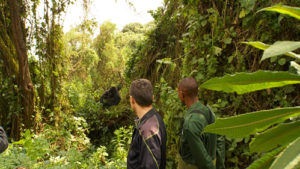 One of the greatest achievements of the new government in Rwanda can be seen in the tourism sector. The government has gone to great lengths in promoting tourism. Government efforts have been aided in part due to the fact that Rwanda is blessed with natural beauty, excellent weather, endless hills, volcanoes, lakes, rivers and wildlife. Tourism infrastructure like roads and hotels are of high standards while the national parks are managed by dedicated and patriotic citizens. Rwanda is one of the safest countries to visit in the world and the capital Kigali is considered to be the cleanest in Africa. Apart from natural beauty, Rwanda has a rich cultural heritage, friendly people and great local cuisine.
One of the greatest achievements of the new government in Rwanda can be seen in the tourism sector. The government has gone to great lengths in promoting tourism. Government efforts have been aided in part due to the fact that Rwanda is blessed with natural beauty, excellent weather, endless hills, volcanoes, lakes, rivers and wildlife. Tourism infrastructure like roads and hotels are of high standards while the national parks are managed by dedicated and patriotic citizens. Rwanda is one of the safest countries to visit in the world and the capital Kigali is considered to be the cleanest in Africa. Apart from natural beauty, Rwanda has a rich cultural heritage, friendly people and great local cuisine.
This article is long and will cover all the major tourist attractions in Rwanda. If you are planning to visit only the capital, you may find the article about the top things to do in Kigali or our 1 day Kigali city tour package more interesting. We also have a comprehensive article about the attractions in Musanze for those who plan on visiting the Volcanoes National Park.
Tourist Attractions in Rwanda
Kigali Genocide Memorial Center: Before going out of the capital for a road trip in Rwanda or to the famous national parks, you will probably want to visit the Genocide Memorial Center in the capital Kigali. The Museum 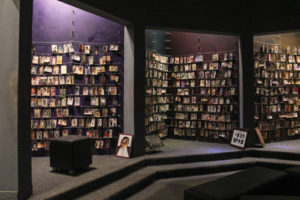 holds the remains of about 250,000 people who were brutally murdered by the Interahamwe (Hutu extremists). The center is divided into three sections – one for children killed during the genocide, another for adults and the final section dedicated to learning about genocides which occurred in different parts of the world.
holds the remains of about 250,000 people who were brutally murdered by the Interahamwe (Hutu extremists). The center is divided into three sections – one for children killed during the genocide, another for adults and the final section dedicated to learning about genocides which occurred in different parts of the world.
While at the site, you will learn a lot about what transpired before, during and after the 1994 genocide. You can watch short videos about the tragic event or listen to what the resident Guides have to say. The experience can be emotional but the main purpose of the displays is to teach people (especially the young generation) about the horrors of genocides so that it never happens anywhere else again.
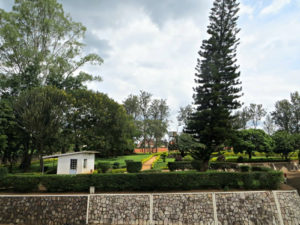 State House Museum: The State House Museum is the former presidential palace. The last president to occupy it was Habyarimana. Habyarimana’s plane crashed in the palace compound after being shot at. The shooting down of the presidential plan is what sparked off a genocide that was already in plan. The palace is now a museum where visitors can go to learn about the events leading up to the genocide and kind of life lived by president Habyarimana. The plane wreckage can still be seen in the compound.
State House Museum: The State House Museum is the former presidential palace. The last president to occupy it was Habyarimana. Habyarimana’s plane crashed in the palace compound after being shot at. The shooting down of the presidential plan is what sparked off a genocide that was already in plan. The palace is now a museum where visitors can go to learn about the events leading up to the genocide and kind of life lived by president Habyarimana. The plane wreckage can still be seen in the compound.
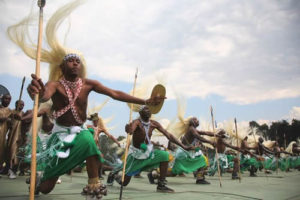 Local Dance Performances: One of the easiest way to understand the culture and traditions of the people of Rwanda is to watch a performance by an Intore Dance Troupe. All the good hotels organize evening dance performances for guests as they relax. The quality of the Intore Dance is measured by the excitement, energy and grace of the performer. The dance may be interrupted by folk stories or other narrations related to the Kinyarwanda culture. Observers are always encouraged to join in at some point.
Local Dance Performances: One of the easiest way to understand the culture and traditions of the people of Rwanda is to watch a performance by an Intore Dance Troupe. All the good hotels organize evening dance performances for guests as they relax. The quality of the Intore Dance is measured by the excitement, energy and grace of the performer. The dance may be interrupted by folk stories or other narrations related to the Kinyarwanda culture. Observers are always encouraged to join in at some point.
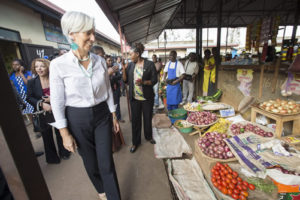 Kimironko Market: A quick way to understand the kind of life lived by people in a new place is by visiting their main central market. Kimironko market is where everyone goes to for cheap fresh fruits, vegetables and food. There are all kinds of things on sale. Shoppers simply visit the different stalls and get what they want. An extension of the market specializes in quality second hand clothes, shoes, handbags and suits. If you are wondering where to get good local fabrics or Kitenge at a good price, then Kimironko is the place to go to.
Kimironko Market: A quick way to understand the kind of life lived by people in a new place is by visiting their main central market. Kimironko market is where everyone goes to for cheap fresh fruits, vegetables and food. There are all kinds of things on sale. Shoppers simply visit the different stalls and get what they want. An extension of the market specializes in quality second hand clothes, shoes, handbags and suits. If you are wondering where to get good local fabrics or Kitenge at a good price, then Kimironko is the place to go to.
Inema Art Center: This Art Center was started by two brothers with the aim of supporting and promoting local artists. The Center has got some of the best contemporary artisan products in the 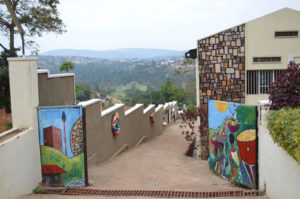 country. You can find displays from some of the finest artists in the country and abroad. The center organizes workshops and training sessions for upcoming artists and especially those who are less privileged orphans. On a typical visit, tourists are shown around the facility as they shop for souvenir from the different galleries. There are also dance performances from a resident Intore cultural group. The art pieces at the Inema Art Centre can be bought online and shipped to you anywhere in the world. After visiting Inema, you might also wish to go to Ivuka Arts Centre to learn about their community projects and shop for more art pieces.
country. You can find displays from some of the finest artists in the country and abroad. The center organizes workshops and training sessions for upcoming artists and especially those who are less privileged orphans. On a typical visit, tourists are shown around the facility as they shop for souvenir from the different galleries. There are also dance performances from a resident Intore cultural group. The art pieces at the Inema Art Centre can be bought online and shipped to you anywhere in the world. After visiting Inema, you might also wish to go to Ivuka Arts Centre to learn about their community projects and shop for more art pieces.
Volunteer during Umuganda: One of the reasons for the remarkable cleanliness of the capital Kigali is the monthly “umuganda” and a government ban on careless disposal of plastic bags. Umuganda is a 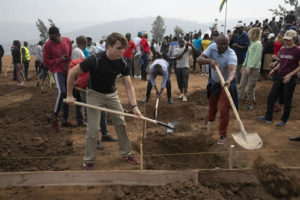 community service which is compulsory for all citizens in the country. It is organized every last Saturday of the month with the president a key participant. Organized committees from each neighborhood decide on what to work in a particular month. One can be required to clear litter on the roads, prune unwanted grasses/bushes or repair a broken public facility. After work is done, everyone gathers to discuss any other issues that may be affecting the community. Umuganda has helped create a sense of togetherness and patriotism among the people of Rwanda – something very important but still lacking in many African countries. You can join in as a volunteer and help clean up a road, repair a house/school or medical center.
community service which is compulsory for all citizens in the country. It is organized every last Saturday of the month with the president a key participant. Organized committees from each neighborhood decide on what to work in a particular month. One can be required to clear litter on the roads, prune unwanted grasses/bushes or repair a broken public facility. After work is done, everyone gathers to discuss any other issues that may be affecting the community. Umuganda has helped create a sense of togetherness and patriotism among the people of Rwanda – something very important but still lacking in many African countries. You can join in as a volunteer and help clean up a road, repair a house/school or medical center.
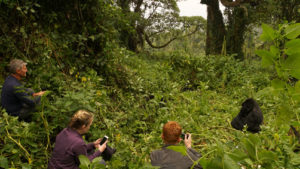 Gorilla Trekking in the Volcanoes National Park: The Volcanoes National Park is arguably the most visited wildlife conservation site in Rwanda. Each year thousands of international visitors go to the park to see mountain gorillas alongside other popular activities. The park has 10 habituated gorilla groups and only 8 people may track a particular group in a day. Gorilla trekking in the Volcanoes National Park starts with a briefing at 7am from the park office. From there visitors are taken out to track different gorilla groups in the company of armed Rangers. Gorilla trekking is one of the most unforgettable experiences while visiting Africa. Why? Because it involves an encounter with an endangered creature that resembles and behaves like we humans. Gorilla permits in Rwanda cost $1500 per person.
Gorilla Trekking in the Volcanoes National Park: The Volcanoes National Park is arguably the most visited wildlife conservation site in Rwanda. Each year thousands of international visitors go to the park to see mountain gorillas alongside other popular activities. The park has 10 habituated gorilla groups and only 8 people may track a particular group in a day. Gorilla trekking in the Volcanoes National Park starts with a briefing at 7am from the park office. From there visitors are taken out to track different gorilla groups in the company of armed Rangers. Gorilla trekking is one of the most unforgettable experiences while visiting Africa. Why? Because it involves an encounter with an endangered creature that resembles and behaves like we humans. Gorilla permits in Rwanda cost $1500 per person.
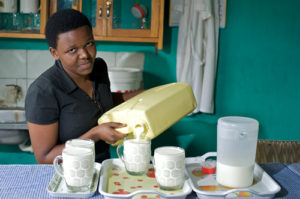 Milk Bars: The Banyarwanda have a long history of raising cattle. Their long-horned cattle are similar to the one seen in Ankole (Uganda). Drinking fresh milk for breakfast is very popular in Rwanda and some even suggest that it is the reason why Rwanda has so many beautiful women. There are milk bars in every part of the country. The milk is got from cow farms in city suburbs and the countryside. Kigali Milk Bar is excellent for those who want to enjoy the milk fresh or hot.
Milk Bars: The Banyarwanda have a long history of raising cattle. Their long-horned cattle are similar to the one seen in Ankole (Uganda). Drinking fresh milk for breakfast is very popular in Rwanda and some even suggest that it is the reason why Rwanda has so many beautiful women. There are milk bars in every part of the country. The milk is got from cow farms in city suburbs and the countryside. Kigali Milk Bar is excellent for those who want to enjoy the milk fresh or hot.
The King’s Palace Museum in Nyanza town: In the past, Rwanda was ruled by a King with the last being King Rudahigwa Mutara III and his replacement King Musinga Yuhi V. Lack of acceptance by all ethnic groups and conflicts with the 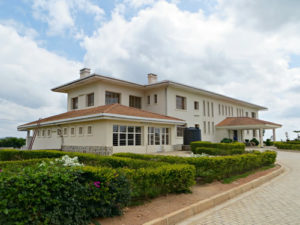 Belgium colonizers led to the abolishment of the kingdoms. What now remains is the palace in Nyanza. This palace has been turned into a major cultural center in Rwanda. It is perfect for visitors who are interested in learning about the country’s past. The palace was built during the reign of King Rudahigwa Mutara III with support from the Belgium government. If you are visiting the southern part of Rwanda or are on your way to Nyungwe National Park, ensure that you stop at the Museum. The Museum has artifacts and information dating back to over 200 years ago. Unfortunately, many of them were stolen or destroyed during the 1994 genocide. King Mutara and his wife Rosalie Gicanda (Killed during the genocide) are buried on a hill close to the Museum.
Belgium colonizers led to the abolishment of the kingdoms. What now remains is the palace in Nyanza. This palace has been turned into a major cultural center in Rwanda. It is perfect for visitors who are interested in learning about the country’s past. The palace was built during the reign of King Rudahigwa Mutara III with support from the Belgium government. If you are visiting the southern part of Rwanda or are on your way to Nyungwe National Park, ensure that you stop at the Museum. The Museum has artifacts and information dating back to over 200 years ago. Unfortunately, many of them were stolen or destroyed during the 1994 genocide. King Mutara and his wife Rosalie Gicanda (Killed during the genocide) are buried on a hill close to the Museum.
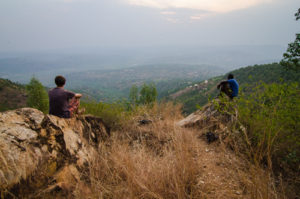 Mount Kigali: Are you wondering about where to get the best views of Kigali? Well, look no further than Mount Kigali. It is not actually a mountain but a prominent hill offering one of the highest points in the country. Reaching the top of the hill will reward you with amazing views of the city. The route to the top of the hill also rewards hikers with beautiful scenery. While on top of Mount Kigali, visitors can also checkout recreational facilities, bars and restaurants.
Mount Kigali: Are you wondering about where to get the best views of Kigali? Well, look no further than Mount Kigali. It is not actually a mountain but a prominent hill offering one of the highest points in the country. Reaching the top of the hill will reward you with amazing views of the city. The route to the top of the hill also rewards hikers with beautiful scenery. While on top of Mount Kigali, visitors can also checkout recreational facilities, bars and restaurants.
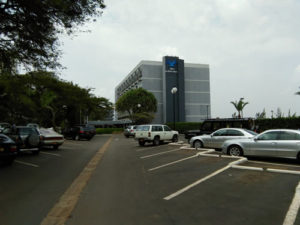 Hotel des Mille Collines: This 5-star hotel was made famous by the movie “Hotel Rwanda” in 2004. The movie is based on the true story of a Hotel Manager who hid over 1200 people in the hotel rooms during the 1994 genocide. He was able to pull this off for a while because the hotel also housed diplomats. Tourists love visiting the prestigious hotel not only because of the role it played during the genocide but also because of the quality of services offered. It has 112 luxury rooms, a swimming pool, restaurant, a fitness center and more. Visit the hotel and count yourself among those who have visited the most famous hotel in Rwanda.
Hotel des Mille Collines: This 5-star hotel was made famous by the movie “Hotel Rwanda” in 2004. The movie is based on the true story of a Hotel Manager who hid over 1200 people in the hotel rooms during the 1994 genocide. He was able to pull this off for a while because the hotel also housed diplomats. Tourists love visiting the prestigious hotel not only because of the role it played during the genocide but also because of the quality of services offered. It has 112 luxury rooms, a swimming pool, restaurant, a fitness center and more. Visit the hotel and count yourself among those who have visited the most famous hotel in Rwanda.
Chimpanzee Trekking in Nyungwe National Park: In Nyungwe forest, Rwanda has one of the oldest afro-montane forests in Africa. This forest is found in the South Western part of the country and is 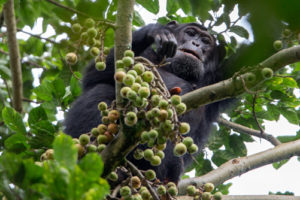 home to 13 species of primates including chimpanzees. Nyungwe forest is one of the last strongholds of the Angola Colobus and Golden Monkeys. While exploring the forest, visitors have over 15 trails to choose from for a nature walk. If nature walks are not your thing, you can choose to go for chimpanzee tracking in Nyungwe forest or the very popular canopy walk. Regardless of which particular activity you register for, you will be rewarded with amazing sightings of birds (310 species), primates (13 species), butterflies (120 species), plants (over 1,000 species), amphibians (32 species), reptiles (38 species) and ancient trees.
home to 13 species of primates including chimpanzees. Nyungwe forest is one of the last strongholds of the Angola Colobus and Golden Monkeys. While exploring the forest, visitors have over 15 trails to choose from for a nature walk. If nature walks are not your thing, you can choose to go for chimpanzee tracking in Nyungwe forest or the very popular canopy walk. Regardless of which particular activity you register for, you will be rewarded with amazing sightings of birds (310 species), primates (13 species), butterflies (120 species), plants (over 1,000 species), amphibians (32 species), reptiles (38 species) and ancient trees.
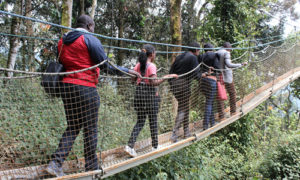 Canopy Walk in Nyungwe forest: Apart from chimpanzee trekking and nature walks, one of the best canopy walk trails in Africa is found in Rwanda’s Nyungwe Forest. The forest canopy walk was introduced in 2010 in an effort to diversify tourism activities in the country. The canopy walkway is 50 meters high hence offering an aerial view of the forest and the creatures therein. The walkway sways left and right as one moves from one point to another hence requiring some confidence to complete the walk. You need to be warned in advance if you have a fear of heights.
Canopy Walk in Nyungwe forest: Apart from chimpanzee trekking and nature walks, one of the best canopy walk trails in Africa is found in Rwanda’s Nyungwe Forest. The forest canopy walk was introduced in 2010 in an effort to diversify tourism activities in the country. The canopy walkway is 50 meters high hence offering an aerial view of the forest and the creatures therein. The walkway sways left and right as one moves from one point to another hence requiring some confidence to complete the walk. You need to be warned in advance if you have a fear of heights.
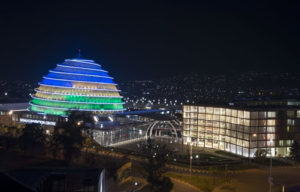 Kigali Convention Center: This Center is one of the most prominent buildings in Kigali. Its architecture is very impressive but what makes it well-known is that it is where most of the major conferences/meetings are held. Apart from the conference hall, the facility also has a 5-star hotel known as Radisson Blue and large shopping centers. The Kigali Convention Center is excellent for photography, shopping or as a place to have lunch. The Center lights up during the night in a way that is second to no building in the country.
Kigali Convention Center: This Center is one of the most prominent buildings in Kigali. Its architecture is very impressive but what makes it well-known is that it is where most of the major conferences/meetings are held. Apart from the conference hall, the facility also has a 5-star hotel known as Radisson Blue and large shopping centers. The Kigali Convention Center is excellent for photography, shopping or as a place to have lunch. The Center lights up during the night in a way that is second to no building in the country.
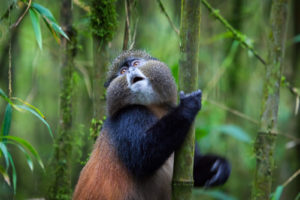 Golden Monkey Tracking: Rwanda is one of the last strongholds for golden monkeys. These beautiful monkeys thrive in the Virunga ranges (Uganda, Rwanda and Congo) and in Kahuzi Biega National Park of the Democratic Republic of Congo. Golden monkeys are endangered and because of that are highly protected. Although eagles are their natural prey, humans are their greatest threat. Tourist love golden monkeys because of their beautiful gold coats, playful nature and endangered statrus. Golden Monkey tracking in Rwanda starts with a briefing at 7:30am. It is less tiring than gorilla trekking because the monkeys don’t move too far off in the forest. Golden monkey permits cost $100 in Rwanda.
Golden Monkey Tracking: Rwanda is one of the last strongholds for golden monkeys. These beautiful monkeys thrive in the Virunga ranges (Uganda, Rwanda and Congo) and in Kahuzi Biega National Park of the Democratic Republic of Congo. Golden monkeys are endangered and because of that are highly protected. Although eagles are their natural prey, humans are their greatest threat. Tourist love golden monkeys because of their beautiful gold coats, playful nature and endangered statrus. Golden Monkey tracking in Rwanda starts with a briefing at 7:30am. It is less tiring than gorilla trekking because the monkeys don’t move too far off in the forest. Golden monkey permits cost $100 in Rwanda.
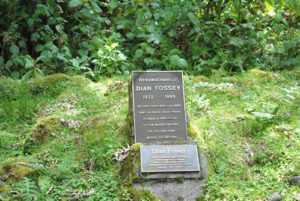 Visiting the Tomb of Dian Fossey: Dian Fossey is one of the greatest primatologists of the 20th Century. She was a pioneer in gorilla research and conservation with funding from the National Geographic. Fossey studied the behavior of mountain gorillas extensively for 18 years and discovered many things about them including how to habituate them.
Visiting the Tomb of Dian Fossey: Dian Fossey is one of the greatest primatologists of the 20th Century. She was a pioneer in gorilla research and conservation with funding from the National Geographic. Fossey studied the behavior of mountain gorillas extensively for 18 years and discovered many things about them including how to habituate them.
Without her findings, what we now know as gorilla trekking and habituation would not be possible. As time went on, Fossey changed focus from research to gorilla conservation in order to protect the primates from extensive poaching. This won her many enemies leading to her death in 1985. Her killers have never been identified to this day.
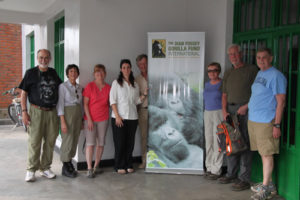 After tracking gorillas, many choose to pay homage to her by visiting her former research center and tomb. Both sites are located on the slopes of mount Karisimbi and Bisoke. Getting to the tomb requires some level of fitness because it involve hiking up the mountains. You also need to prepare to deal with muddy trails especially during the wet season. The Dian Fossey Hike permit costs $80 per person. One of the advantages of signing for the Dian Fossey hike is that you might get lucky and encounter one of the mountain gorilla groups along the trails. After visiting her tomb and former Karisoke Centre, you can also visit the new Karisoke Research Center found in the town of Musanze. This is where the Dian Fossey Gorilla Fund offices are also located and where her work continues.
After tracking gorillas, many choose to pay homage to her by visiting her former research center and tomb. Both sites are located on the slopes of mount Karisimbi and Bisoke. Getting to the tomb requires some level of fitness because it involve hiking up the mountains. You also need to prepare to deal with muddy trails especially during the wet season. The Dian Fossey Hike permit costs $80 per person. One of the advantages of signing for the Dian Fossey hike is that you might get lucky and encounter one of the mountain gorilla groups along the trails. After visiting her tomb and former Karisoke Centre, you can also visit the new Karisoke Research Center found in the town of Musanze. This is where the Dian Fossey Gorilla Fund offices are also located and where her work continues.
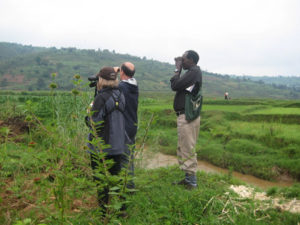 Birdwatching: Rwanda is an excellent birding destination with over 640 species of birds – 30 of which are endemic to the country. Birding in Rwanda is organized at Akagera National Park, Nyungwe National Park, the Volcanoes National Park and around Lake Kivu. Other birding spots include the suburbs in Kigali and the various smaller water-bodies, wetlands/swamps, marshlands and agricultural plantations. The main species to look out for are those endemic to the Albertine Rift and the Virunga ranges. The intriguing Shoebill stork can also be sighted in wetlands and marshes of Akagera.
Birdwatching: Rwanda is an excellent birding destination with over 640 species of birds – 30 of which are endemic to the country. Birding in Rwanda is organized at Akagera National Park, Nyungwe National Park, the Volcanoes National Park and around Lake Kivu. Other birding spots include the suburbs in Kigali and the various smaller water-bodies, wetlands/swamps, marshlands and agricultural plantations. The main species to look out for are those endemic to the Albertine Rift and the Virunga ranges. The intriguing Shoebill stork can also be sighted in wetlands and marshes of Akagera.
Game drive in Akagera National Park: With all talk focused on mountain gorillas, it is easy to forget that Rwanda is also excellent for game drives and standard wildlife safaris. Akagera is Rwanda’s only savanna park covering an area of 1,085 square kilometers. It was established in 1934 but the park lost a significant number of wildlife during the 1994 genocide. Thousands of fleeing citizens used the park as an escape route to seek safety in neighboring countries. When the genocide ended, many chose to settle in parts of the park leading to uncontrolled poaching and encroachments.
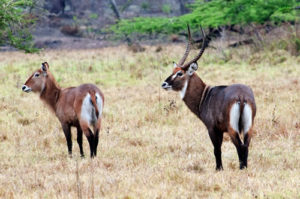 When the African Parks Network teamed up with the government to manage the park, the number of wildlife increased and species that had been lost were re-introduced. Akagera National Park is composed of swamps, savanna plains, woodlands, lakes, rivers and terraced hills. It is now home to all the Big 5 animals (Lions, Rhinos, elephants, Buffaloes and Leopards) hence offering tourists a chance to experience a full wildlife safari in Rwanda (Taking into consideration other activities like gorilla trekking, chimpanzee tracking, cultural encounters and mountain climbing). Akagera is also home to olive baboons, blue monkeys, vervet monkeys, hyenas, leopards and hippos to mention a few. Apart from standard game drives, Akagera is excellent for birding, nature walks and sport fishing in Lake Shakani. The afternoon boat cruise along Lake Ihema is very popular too and rewards tourists with beautiful scenery and encounters with aquatic birds, crocodiles, hippos and antelopes drinking by the Lake shores.
When the African Parks Network teamed up with the government to manage the park, the number of wildlife increased and species that had been lost were re-introduced. Akagera National Park is composed of swamps, savanna plains, woodlands, lakes, rivers and terraced hills. It is now home to all the Big 5 animals (Lions, Rhinos, elephants, Buffaloes and Leopards) hence offering tourists a chance to experience a full wildlife safari in Rwanda (Taking into consideration other activities like gorilla trekking, chimpanzee tracking, cultural encounters and mountain climbing). Akagera is also home to olive baboons, blue monkeys, vervet monkeys, hyenas, leopards and hippos to mention a few. Apart from standard game drives, Akagera is excellent for birding, nature walks and sport fishing in Lake Shakani. The afternoon boat cruise along Lake Ihema is very popular too and rewards tourists with beautiful scenery and encounters with aquatic birds, crocodiles, hippos and antelopes drinking by the Lake shores.
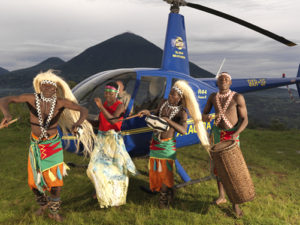 Helicopter Tour: Helicopter tours in Kigali are arranged by Akagera aviation for those who want to get an aerial view of Kigali and the countryside. A helicopter tour can cost anywhere between $500 to $4500 depending on the specific route. Regardless of which route you choose to take, expect to be rewarded with beautiful views of Rwanda’s hills and the majestic Virunga volcanoes. Helicopter tours can also be arranged all the way to Nyungwe National Park for amazing views of the vast forest and the vast Virunga ranges going all the way to the Democratic Republic of Congo. All flights start and end in Kigali.
Helicopter Tour: Helicopter tours in Kigali are arranged by Akagera aviation for those who want to get an aerial view of Kigali and the countryside. A helicopter tour can cost anywhere between $500 to $4500 depending on the specific route. Regardless of which route you choose to take, expect to be rewarded with beautiful views of Rwanda’s hills and the majestic Virunga volcanoes. Helicopter tours can also be arranged all the way to Nyungwe National Park for amazing views of the vast forest and the vast Virunga ranges going all the way to the Democratic Republic of Congo. All flights start and end in Kigali.
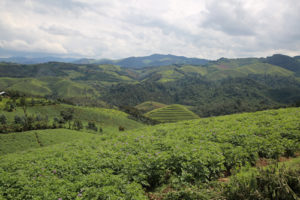 Nature Walk, birding and Primates tracking in Gishwati-Mukura National Park: Gishwat-Mukura is the newest national park in Rwanda. It was formed by joining the two forests of Gishwati and Mukura. The park is found close to Lake Kivu and is an excellent example of Rwanda’s conservation efforts. During and after the genocide, refugees encroached on forested land leading to severe deforestation and land degradation. The government with support from partners like the world bank have rejuvenated the entire landscape by re-planting trees and resettling local people who had encroached on the forest. Tourists can visit the park for nature walks, bird-watching and tracking primates like Chimpanzees or L’Hoest’s monkeys.
Nature Walk, birding and Primates tracking in Gishwati-Mukura National Park: Gishwat-Mukura is the newest national park in Rwanda. It was formed by joining the two forests of Gishwati and Mukura. The park is found close to Lake Kivu and is an excellent example of Rwanda’s conservation efforts. During and after the genocide, refugees encroached on forested land leading to severe deforestation and land degradation. The government with support from partners like the world bank have rejuvenated the entire landscape by re-planting trees and resettling local people who had encroached on the forest. Tourists can visit the park for nature walks, bird-watching and tracking primates like Chimpanzees or L’Hoest’s monkeys.
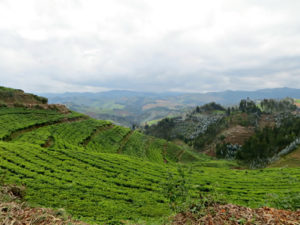 Visit Coffee and Tea Plantations: Rwanda is known for exporting some of the finest tea and coffee in Africa. In fact, tea is the leading export of the country while the quality of the coffee has won many international awards. Coffee and tea farming is aided in part by the fertile volcanic soils, high altitude and good weather in the country. Coffee and Tea plantation tours can be organized for tourists who are interested in learning about how the two cash crops are grown/processed. The tours involve observing how the workers plant the crop, pick, select, wash, dry and turn them into final products ready for consumption. Every tour should end with tasting locally prepared coffee- also known as African tea (Coffee or tea mixed with milk and other flavors). Contact Pfunda tea plantation if you are interested in one of their tours.
Visit Coffee and Tea Plantations: Rwanda is known for exporting some of the finest tea and coffee in Africa. In fact, tea is the leading export of the country while the quality of the coffee has won many international awards. Coffee and tea farming is aided in part by the fertile volcanic soils, high altitude and good weather in the country. Coffee and Tea plantation tours can be organized for tourists who are interested in learning about how the two cash crops are grown/processed. The tours involve observing how the workers plant the crop, pick, select, wash, dry and turn them into final products ready for consumption. Every tour should end with tasting locally prepared coffee- also known as African tea (Coffee or tea mixed with milk and other flavors). Contact Pfunda tea plantation if you are interested in one of their tours.
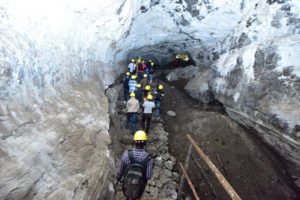 Musanze Caves: These ancient caves are found in Musanze district, outside the Volcanoes National Park. The caves were opened to tourism in 2013 after undergoing rehabilitation which involved building staircases and paved trails/paths. The Musanze caves are about 2 kilometers long and where formed from lava flows over 60 million years ago – Around the time when the East African Rift Valley was formed. There are about 32 entrances with the main entrance about 10 kilometers wide. The Musanze caves are a popular attraction for those interested in geology or adventure. The bat-filled caves were once hiding grounds for the Batwa pygmies and other tribal groups in the area.
Musanze Caves: These ancient caves are found in Musanze district, outside the Volcanoes National Park. The caves were opened to tourism in 2013 after undergoing rehabilitation which involved building staircases and paved trails/paths. The Musanze caves are about 2 kilometers long and where formed from lava flows over 60 million years ago – Around the time when the East African Rift Valley was formed. There are about 32 entrances with the main entrance about 10 kilometers wide. The Musanze caves are a popular attraction for those interested in geology or adventure. The bat-filled caves were once hiding grounds for the Batwa pygmies and other tribal groups in the area.
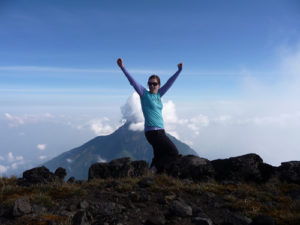 Hiking Mount Karisimbi: Rising over 4,500 meters high, Mount Karisimbi is one of the tallest mountains in Africa. The mountain is found in the Volcanoes National Park and is one of the 8 volcanoes found within the wider Virunga ranges in Congo, Rwanda and Uganda. Hiking Mount Karisimbi takes two days. Though challenging, the hike rewards participants with beautiful views of the Virunga ranges, the lava-spewing Nyiragongo volcano, national parks in Uganda and Congo. Hiking mount Karisimbi is usually combing with gorilla and golden monkey trekking in the Volcanoes National Park.
Hiking Mount Karisimbi: Rising over 4,500 meters high, Mount Karisimbi is one of the tallest mountains in Africa. The mountain is found in the Volcanoes National Park and is one of the 8 volcanoes found within the wider Virunga ranges in Congo, Rwanda and Uganda. Hiking Mount Karisimbi takes two days. Though challenging, the hike rewards participants with beautiful views of the Virunga ranges, the lava-spewing Nyiragongo volcano, national parks in Uganda and Congo. Hiking mount Karisimbi is usually combing with gorilla and golden monkey trekking in the Volcanoes National Park.
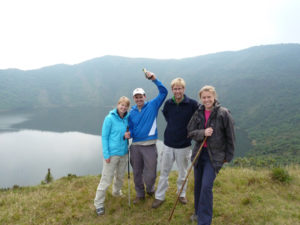 Climbing Mount Bisoke: Rising 3,711 meters high, Mount Bisoke isn’t the tallest volcano in Rwanda. What makes it the most popular volcano is that it is an easier hike. It takes only one day to get to the summit and back. Getting to the summit rewards hikers with an opportunity to explore a giant crater and also gaze at the other Virunga volcanoes and the volcanoes National Park. If you are lucky, you might encounter a gorilla or golden monkey group as you climb the lower slopes of the mountain.
Climbing Mount Bisoke: Rising 3,711 meters high, Mount Bisoke isn’t the tallest volcano in Rwanda. What makes it the most popular volcano is that it is an easier hike. It takes only one day to get to the summit and back. Getting to the summit rewards hikers with an opportunity to explore a giant crater and also gaze at the other Virunga volcanoes and the volcanoes National Park. If you are lucky, you might encounter a gorilla or golden monkey group as you climb the lower slopes of the mountain.
The Congo Nile Trail: The Congo Nile trail is a new addition by the government of Rwanda as it diversifies the tourism attractions in the country. The Congo Nile trail is 140 miles long and can be 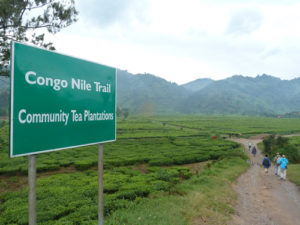 traversed using a motorcycle, bike or on foot. If one decided to walk, it may take 10 days to cover the entire trail. The Congo Nile Trail is one of the best biking trails in East Africa. The trail rewards bikers with amazing scenery and all that is good about the Rwanda countryside – beautiful rolling hills, tea plantations, rural villages, lake Kivu and Nyungwe National Park. By the time one completes the trail, they would have an understanding of how the local people go about with their lives. Accommodation is not a problem along the way as there are many campsites and hotels to choose from. You could even move with your own tent and set it up outside churches or schools. You can hire a bike and someone to accompany you from a reputable tour operator.
traversed using a motorcycle, bike or on foot. If one decided to walk, it may take 10 days to cover the entire trail. The Congo Nile Trail is one of the best biking trails in East Africa. The trail rewards bikers with amazing scenery and all that is good about the Rwanda countryside – beautiful rolling hills, tea plantations, rural villages, lake Kivu and Nyungwe National Park. By the time one completes the trail, they would have an understanding of how the local people go about with their lives. Accommodation is not a problem along the way as there are many campsites and hotels to choose from. You could even move with your own tent and set it up outside churches or schools. You can hire a bike and someone to accompany you from a reputable tour operator.
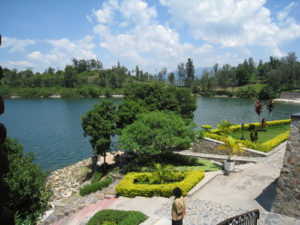 Relaxation along the shores of Lake Kivu: With a surface area of over 2,700 square kilometers, Lake Kivu is the largest water body in Rwanda. It is the 6th largest lake in Africa and spreads all the way to the Democratic Republic of Congo. Tourists enjoy exploring the lake because of the beautiful shorelines, resorts and islands. Lake Kivu is excellent for swimming, bird-watching, canoeing, kayaking, water skiing, windsurfing, paddle boarding other water sports. The Congo Nile trail was built along the shores of the lake hence offering bikers a chance to explore the Rwanda countryside on a mountain bike or on foot. There are no hippos or crocodiles in lake Kivu.
Relaxation along the shores of Lake Kivu: With a surface area of over 2,700 square kilometers, Lake Kivu is the largest water body in Rwanda. It is the 6th largest lake in Africa and spreads all the way to the Democratic Republic of Congo. Tourists enjoy exploring the lake because of the beautiful shorelines, resorts and islands. Lake Kivu is excellent for swimming, bird-watching, canoeing, kayaking, water skiing, windsurfing, paddle boarding other water sports. The Congo Nile trail was built along the shores of the lake hence offering bikers a chance to explore the Rwanda countryside on a mountain bike or on foot. There are no hippos or crocodiles in lake Kivu.
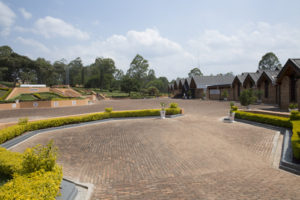 The National Museum of Rwanda: Now known as the Ethnographic Museum, the site was built in 1989 and is found in Butare – A town found 80 kilometers away from the capital Kigali. It is a favorite stop for tourists visiting Nyungwe Forest National Park. The Museum offers opportunities to learn about the culture of the Banyarwanda. The museum’s 7 galleries showcase photos, cultural tools and ancient artifacts (pottery, instruments, traditional regalia and woodwork) dating over 500 years. After checking out what is in the gallery, you can watch Intore dancers entertaining guests.
The National Museum of Rwanda: Now known as the Ethnographic Museum, the site was built in 1989 and is found in Butare – A town found 80 kilometers away from the capital Kigali. It is a favorite stop for tourists visiting Nyungwe Forest National Park. The Museum offers opportunities to learn about the culture of the Banyarwanda. The museum’s 7 galleries showcase photos, cultural tools and ancient artifacts (pottery, instruments, traditional regalia and woodwork) dating over 500 years. After checking out what is in the gallery, you can watch Intore dancers entertaining guests.
 Local Food: Rwandan food may not be top of anyone’s list of key attractions in the country but still worth noting. The popular local cuisine is a combination of the best that East Africa has to offer. Apart from the fresh cow milk already discussed earlier, you can try grilled meat, Isombe, somboza, akabanga and a variety of local brochettes. Urwagwa is a popular type of banana beer which the locals take after work or on weekends. All the high-end hotels and restaurants prepare local food but Repub Lounge is a favorite for expatriates living in the area.
Local Food: Rwandan food may not be top of anyone’s list of key attractions in the country but still worth noting. The popular local cuisine is a combination of the best that East Africa has to offer. Apart from the fresh cow milk already discussed earlier, you can try grilled meat, Isombe, somboza, akabanga and a variety of local brochettes. Urwagwa is a popular type of banana beer which the locals take after work or on weekends. All the high-end hotels and restaurants prepare local food but Repub Lounge is a favorite for expatriates living in the area.
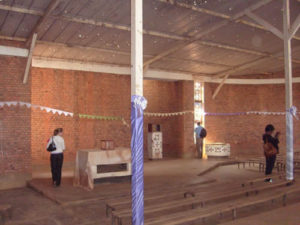 Nyamata Church: if you want to learn more about what transpired before, during and after the genocide in Rwanda, you must visit this church. About 10,000 Tutsi’s sought shelter in the church hoping that they would be safe but where all killed by the merciless Interahamwe. The Hutu extremists used grenades to open the church doors and killed all who were inside. Visitors to the site can still see human bones, bloodstained clothes and bullet holes in the church. About 50,000 people were buried in a mass grave outside the church.
Nyamata Church: if you want to learn more about what transpired before, during and after the genocide in Rwanda, you must visit this church. About 10,000 Tutsi’s sought shelter in the church hoping that they would be safe but where all killed by the merciless Interahamwe. The Hutu extremists used grenades to open the church doors and killed all who were inside. Visitors to the site can still see human bones, bloodstained clothes and bullet holes in the church. About 50,000 people were buried in a mass grave outside the church.
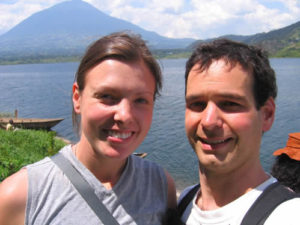 Lake Burera and Ruhondo: These beautiful twin lakes are found around the Volcanoes National Park. Most tourists visit the lake in the afternoon/evening hours and after completing activities within the park – like gorilla trekking. The lush landscape is home to birds and an amazing plant collection. One can go for nature walks, canoeing, birding, camping or visiting the local fishermen. Honeymooners and couples will find the beautiful scenery very calming and refreshing especially after completing tiring activities at the Volcanoes National Park.
Lake Burera and Ruhondo: These beautiful twin lakes are found around the Volcanoes National Park. Most tourists visit the lake in the afternoon/evening hours and after completing activities within the park – like gorilla trekking. The lush landscape is home to birds and an amazing plant collection. One can go for nature walks, canoeing, birding, camping or visiting the local fishermen. Honeymooners and couples will find the beautiful scenery very calming and refreshing especially after completing tiring activities at the Volcanoes National Park.
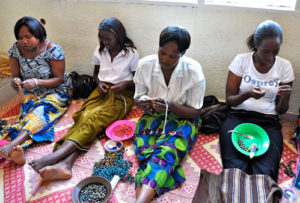 Nyamirambo Women’s Center: This non-profit center is found in Nyamirambo district (part of Kigali). It was founded to train women so that they can create their own jobs or become gainfully employed. The women at the center are taught how to create quality clothing using local fabrics. The women also produce home decoration items, beautiful beads and other souvenirs. The Nyamirambo Women’s Center also organizes walking tours around the neighborhood for tourists who want to learn more about the kind of life lived by the local people. When you visit this center, ensure that you purchase something to support the women.
Nyamirambo Women’s Center: This non-profit center is found in Nyamirambo district (part of Kigali). It was founded to train women so that they can create their own jobs or become gainfully employed. The women at the center are taught how to create quality clothing using local fabrics. The women also produce home decoration items, beautiful beads and other souvenirs. The Nyamirambo Women’s Center also organizes walking tours around the neighborhood for tourists who want to learn more about the kind of life lived by the local people. When you visit this center, ensure that you purchase something to support the women.
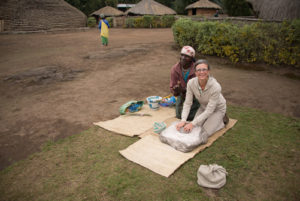 Gorilla Guardians Village: Formerly Known as the Ibyiwacu Cultural Village, the Centre was founded by Edwin Sabuhoro (a former warden at the Volcanoes National Park) to showcase all that is great about the Kinyarwanda Culture while also providing employment for ex-poachers. Visitors are first taken for a tour of the Centre before settling down to watch cultural dances. While at the Gorilla Guardians village, visitors can also learn how to prepare local food or hunt like the Batwa people. You may be invited to wear traditional royal clothes and experience what it was like to be a cultural leader.
Gorilla Guardians Village: Formerly Known as the Ibyiwacu Cultural Village, the Centre was founded by Edwin Sabuhoro (a former warden at the Volcanoes National Park) to showcase all that is great about the Kinyarwanda Culture while also providing employment for ex-poachers. Visitors are first taken for a tour of the Centre before settling down to watch cultural dances. While at the Gorilla Guardians village, visitors can also learn how to prepare local food or hunt like the Batwa people. You may be invited to wear traditional royal clothes and experience what it was like to be a cultural leader.
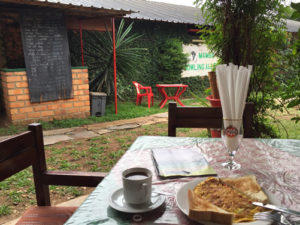 Mamba Club in Kigali: Are you wondering about where to hang out for the evening in Kigali? Mamba Club is a very popular recreation center for an evening of fun while mingling with the middle and upper class of Kigali. They organize different recreational activities like swimming, football, volleyball, billiards and Ping-pong. Mamba Club has the city’s only bowling alley. Go with your family, colleagues or friends to Mamba Club and have an amazing time till late in the night. The food is excellent and drinks are served from a well-stocked bar.
Mamba Club in Kigali: Are you wondering about where to hang out for the evening in Kigali? Mamba Club is a very popular recreation center for an evening of fun while mingling with the middle and upper class of Kigali. They organize different recreational activities like swimming, football, volleyball, billiards and Ping-pong. Mamba Club has the city’s only bowling alley. Go with your family, colleagues or friends to Mamba Club and have an amazing time till late in the night. The food is excellent and drinks are served from a well-stocked bar.
Additional Information about activities to do in Rwanda
Some people may question their safety while in Rwanda because of what happened during the 1994 genocide and the general stereotype about security in Africa. Let me put it to you. Rwanda is one of the safest countries to visit in the world. You are more likely to face security threats in your own home town 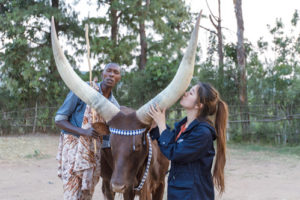 than while traveling in Rwanda. The tragedy of 1994 helped unite the people in a way that cannot be possible in other ways. This unity has allowed the state rebuild infrastructure and curb corruption. Over 60 percent of the most senior government officials are women. Rwandan’s are very friendly and kind to foreigners.
than while traveling in Rwanda. The tragedy of 1994 helped unite the people in a way that cannot be possible in other ways. This unity has allowed the state rebuild infrastructure and curb corruption. Over 60 percent of the most senior government officials are women. Rwandan’s are very friendly and kind to foreigners.
You may be required to have a Visa before entering Rwanda through the airport or border crossings. Visas can be got online or once you arrive in the country. A Rwanda visa costs $50 and is valid for 30 days. If you are planning to visit the other countries in East Africa, you might want to read about the East Africa tourist Visa.
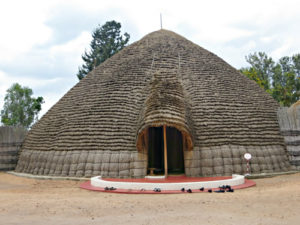 Whereas US Dollars are accepted in the country, it is important to have some money exchanged to the local Rwandan franc because not everyone accepts credit cards. Money can be exchanged from Forex Bureaus at the airport or within the major cities/towns. You may also get local currency by simply inserting your credit card to one of the local bank ATMS
Whereas US Dollars are accepted in the country, it is important to have some money exchanged to the local Rwandan franc because not everyone accepts credit cards. Money can be exchanged from Forex Bureaus at the airport or within the major cities/towns. You may also get local currency by simply inserting your credit card to one of the local bank ATMS
All the hotel staff and park Guides will be hoping for some tip from you as an international traveler. It is not compulsory but it may win you small favors and friends. Tip shouldn’t go beyond $15 for the company drivers, park and hotel staff.
The telephone networks and internet connectivity in Rwanda is excellent and rated as among the best in Africa. You can expect to get internet and make international calls from almost every part of the country.
The weather is Rwanda is excellent with daily temperatures averaging about 21°C. However, the areas around Musanze and particularly the Volcanoes National Park can be very cold because of the high altitude. You must have warm clothes if you are planning to visit the Volcanoes National Park. If you are 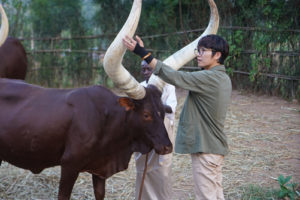 in Kigali, expect warm days. To protect yourself from the sun’s rays, pack sunglasses, a hat and light clothes. You will still need warm clothes in the evening/night even when in Kigali.
in Kigali, expect warm days. To protect yourself from the sun’s rays, pack sunglasses, a hat and light clothes. You will still need warm clothes in the evening/night even when in Kigali.
Visitors to Rwanda may be required to show proof that they have had a yellow fever vaccination shot whenever their is a disease outbreak. You may also be required to show proof of being fully vaccinated against COVID-19. A negative COVID Test result is a requirement to see gorillas, chimps and golden monkeys as I write this article. Before traveling solo to Rwanda, ensure that you visit your doctor for any medical advice. Do not forget to travel with any of your prescribed medicines.
The best time to visit Rwanda is between June to August and also December to early February. These months have less rain and favored by tourists going on a Rwanda safari. National parks and activities continue regardless of whether it is a dry or wet season. In fact, if you want to get the best accommodation rates or avoid the crowds, better visit during the low seasons.

